Speech therapy data collection can look a little different for every therapist. We all have our different methods that work for us. However, we do need to make sure that we are using valid and reliable methods to collect our therapy data. The American Speech-Language-Hearing Association (ASHA) describes baseline data as that which is “used to determine the quantitative level for the indicators of success and indicates how much change will occur if the desired outcome is achieved” (Dublinske, ASHA).
Basically, we need to know where our students are starting (in real numbers # correct / # of trials or %) so that we can track their growth to show strengths, weaknesses, and mastery of goals.
So, how do we do this without constantly testing and drilling our students? Leaving no time for teaching new skills and speech/language instruction? Read more for all of my tips for speech therapy data collection.
If you want access to some of my favorite freebies, sign up with your email address here to get access to my free library (growing weekly). It is full of some of my goodies made exclusively for my followers.
Speech Therapy Data Tracking Sheets
It has taken me YEARS to find a data collection method that works for me and that I found simple to use on a regular basis. I’ve tried a little bit of everything. In this process, I’ve learned that what works for one person, may not work for another. Which is totally fine! I spent time exploring different options, reading about what other SLPs use, downloading different types of data sheets and progress monitoring tools… All so I could figure out what did and did not work for me.
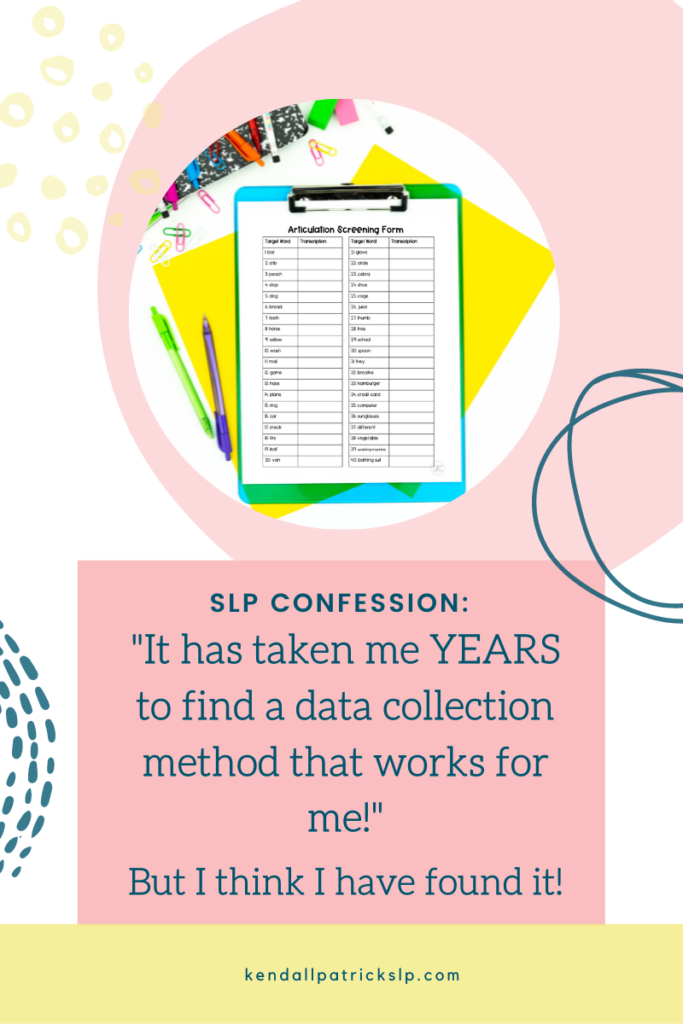
Speech Therapy Data Sheet Template
For the most part, I am still old school and I like to write things down on paper. I am trying to branch out and use more technology, but I still love my paper. (I still use a paper planner too!)
If you’re interested in trying out the speech therapy data sheet templates that worked for me, I have some in my store. This is a collection of data sheets that I use most often for my different groups and individual therapy. I have a lot of different types of groups and sizes of groups. It is important to take into account the various service delivery models you will be utilizing for your caseload. I usually have a lot of groups that are seen twice a week for 30 minutes each. That is what makes up most of my schedule. But I also see kids in a “5-minute kid” model for articulation daily. I have some groups that come 3-4 days because of higher needs or the need for more frequent services. Some students are seen just once a week (e.g., in a fluency or social skills group). I also push-in to our full-time ESE classroom.
For more information on my different service delivery models and how I schedule them, click here.
Sample FREEBIE in library
Not sure if paper speech therapy data sheets are for you? Try a sample of mine here in my free resource library. Ready to print and test out in your next session.
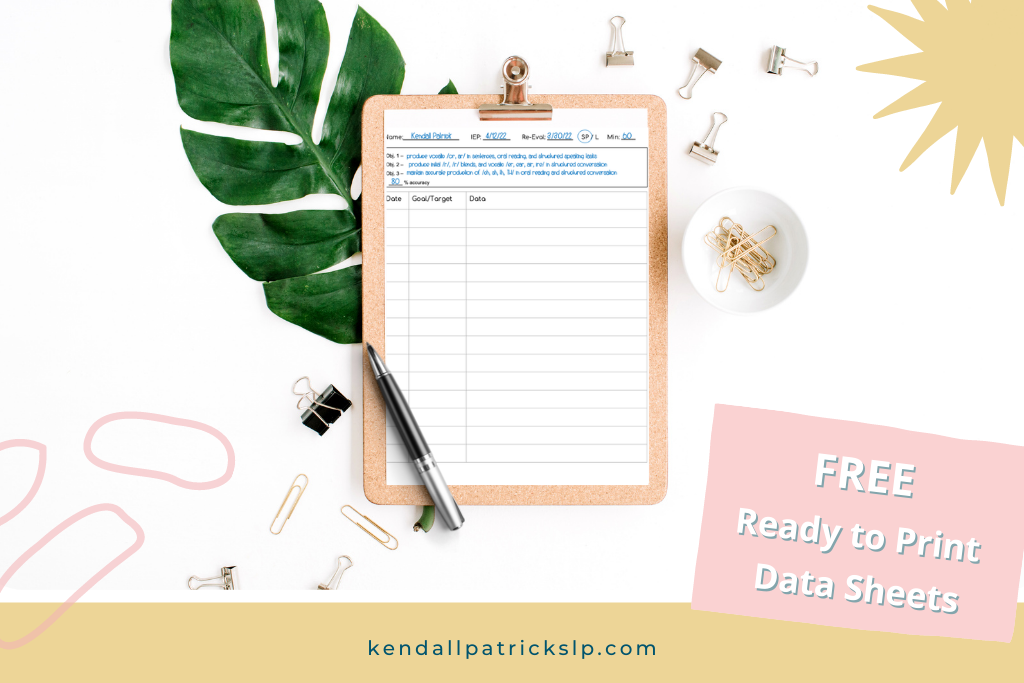
Speech Therapy Data Collection Methods
So while I do love my handwritten notes, I have recently started looking into other options. I have read about others using spreadsheets, google docs, google forms, etc. And with a shift in needing more and more documentation and easily accessible district progress monitoring, it just makes sense to try out some of these methods.
Speech Therapy Data Collection Forms in Google Docs
Now before this, I had never created a google form, and spreadsheets tend to overwhelm me a bit… But with a little bit of research (and a few youtube videos) I figured out just how easy it is! Now I am no expert and I am just trying this out for the first time. But if you are wanting to get your feet wet then you can jump on in and try it out with me!
- Create a Google Form for each student
- Link the form to a new spreadsheet
- This spreadsheet is where you will collect and keep your therapy data sheets (each student will have their own sheet on this spreadsheet
- I also make a sheet with a copy of my schedule and links to each of the google forms. I keep this page open all day long on my lapto. That way I can quickly click and enter data throughout the day when I have a moment
When using paper data sheets, I like to use group data collection sheets for my language groups, mixed groups, and younger groups (it just makes my life easier). But, I still like using individual sheets for my articulation only students. So I use a variety of methods and data sheets that you will find below.
Individual Speech Therapy Data Sheets
There are many benefits to using individual data sheets for students with articulation goals and for the “5 minute kid” model. Students working on articulation goals typically have a wider variety of goals due to the nature and severity of their errors. When students in a group are working on different sounds and/or levels, it makes it more difficult to record and keep track of progress on group sheets. Students seen on a “5 minute kid” are seen individually, so individual sheets just make more sense in that situation.
Speech Therapy Group Data Sheets
I also see a lot of benefits in using group data sheets for language groups, phonological cycles groups, and for my littles (younger students). When addressing language goals in group therapy, typically I use one-two activities in a session to target the individual language goals. I also try (when possible) to group students based on similar needs/goals. Therefore, it is easier to have one group page where I list the activity for everyone, and individual data for each student. For my younger students (Pre-K & K), I find it easier to keep group data sheets. That way I’m not flipping between pages in the session. Our littles typically require a little more… So anything to make it easier is always a good idea in my book!

Speech Therapy Data Tracking for Articulation & Phonological Processes
I also like to get some quick baselines for my kiddos with articulation goals as well. I used to use these long packets and gather multiple trials for every single sound, in every single position, at different levels (word, phrase, sentence, etc.). But the problem was, this took weeks to do! My kids quickly became bored with it, and I felt like I was wasting valuable therapy time. So while I still feel it’s important to gather this information so I can use my therapy time more productively and efficiently, I now gather smaller samples and get just what I need without all the extra.
This is what it may look like:
Check to see if they can produce their target sounds in isolation. If no – stop there. That’s where we need to start in therapy. If yes for some, check-in syllables and words (with 3-5 targets maximum). I use an app on my phone for word lists (Word Vault – free version) but you can use any articulation decks, printed word lists, or apps you have.
This method allows me to move quickly through all targets for my students with a few sound errors.
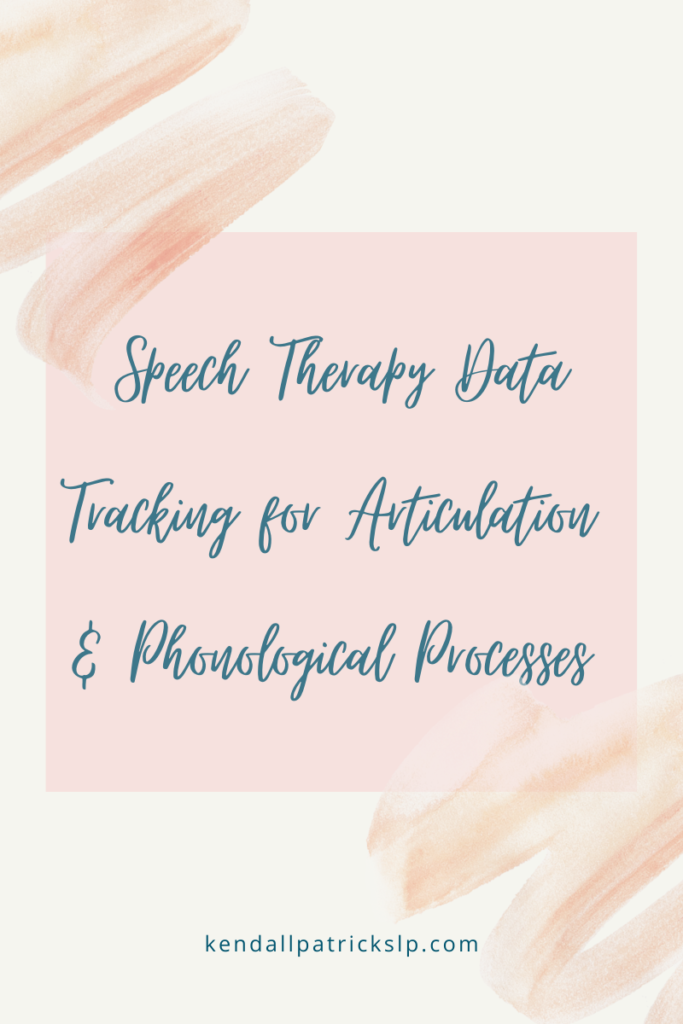
Target Pictures for Quick Screening, Full Screening, and Progress Monitoring
Now, for my students with more severe articulation and/or phonological delays, that’s where it can get a little more tricky. If I were to try to go through every single sound error in every position, it would take forever. I also may not get great information about sound patterns and situations they may struggle/not struggle with – not to mention how incredibly frustrating it would be for the child. For that reason, I use a quick articulation/phonological progress monitoring tool (which also doubles as a screener) to get a snapshot of the child’s overall sound errors. It not only gives me a great place to start but also gives me a quick, visual, easy way to progress-monitor throughout the year and before IEP updates.
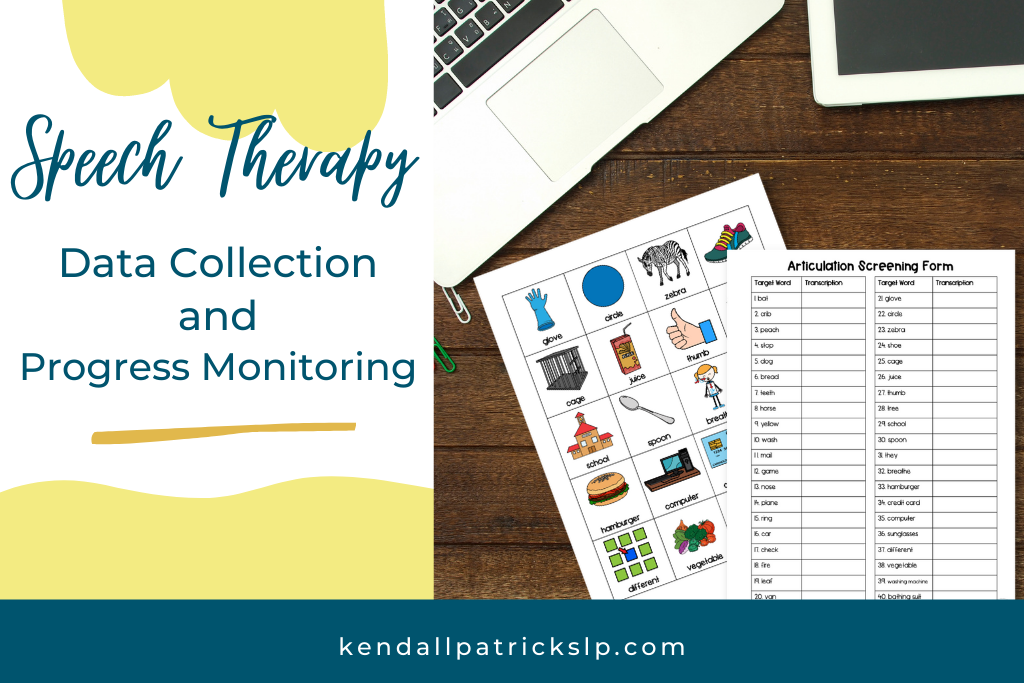
Speech therapy data collection forms
I also use these speech therapy data collection forms (from the same product) to keep track of progress throughout the year. This is perfect for semester progress monitoring when progress report time rolls around.
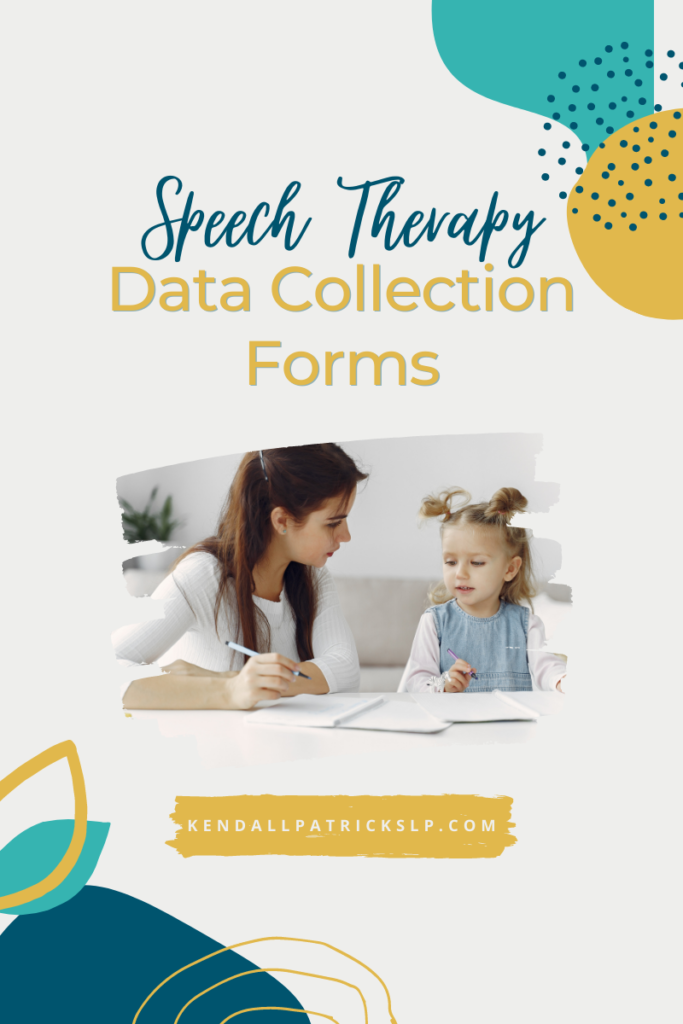
Ideas
More Information on Speech Therapy Data Collection Methods
Additional Ways to Collect Speech Therapy Data
Don’t forget to sign up with your email address here to get access to my free library (growing weekly) full of some of my goodies made exclusively for my followers.
I hope you found some of these ideas helpful and can use one or more in your therapy room this school year. Please leave a comment or shoot me an email if you want to share some of your favorite speech therapy data collection tricks.


